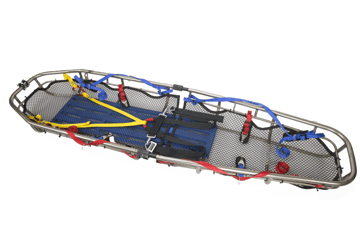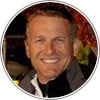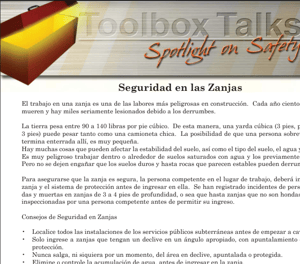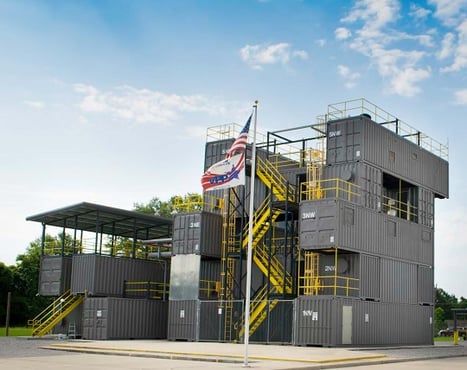During a recent snow storm in Highland Mills, New York, the Woodbury Fire Department performed a rope rescue for a driver whose car flipped over the guardrail. The wreck occurred on Route 293, with the car tumbling down a 50 to 60 foot embankment and landing upside down in a stream.
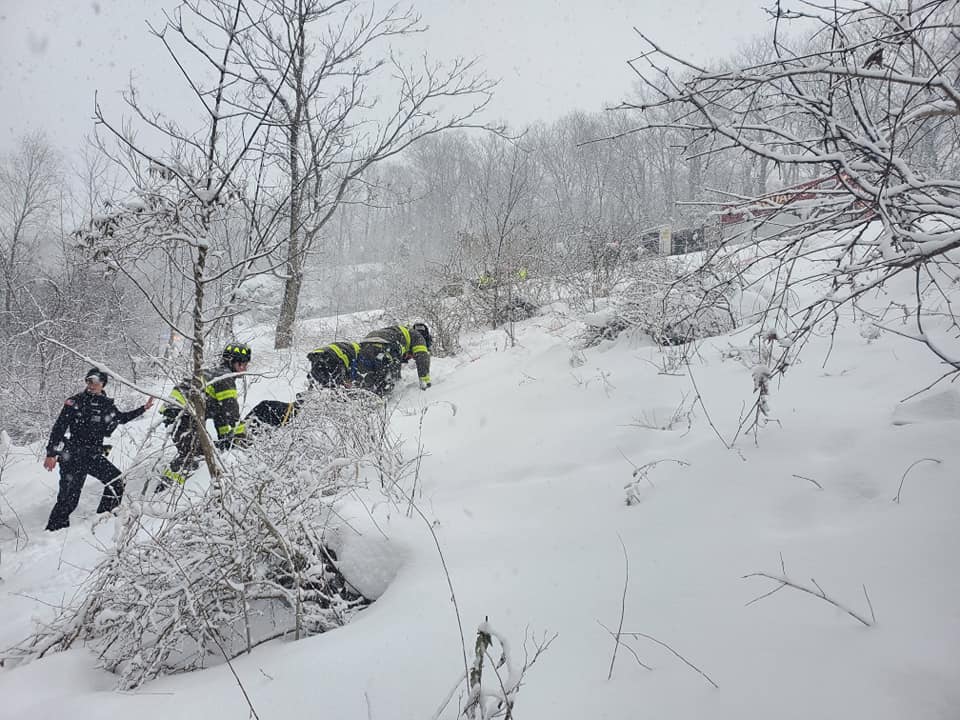 Incredibly the motorist sustained only minor injuries, and rescuers used low-angle rescue techniques.
Incredibly the motorist sustained only minor injuries, and rescuers used low-angle rescue techniques.




